"Keeping The Memory Alive" - International Poster Competition 2012 is a project funded by the grant programme of the Task Force for International Cooperation on Holocaust Education, Remembrance and Research (ITF). Partnering in the project: Yad Vashem, Israel, together with the Israel Ministry of Public Diplomacy and Diaspora Affairs; Mémorial de la Shoah, France; and the European Shoah Legacy Institute, Czech Republic, in cooperation with the Holocaust and the United Nations Outreach Programme.
An international panel of distinguished judges, comprising experts in both design and in Holocaust Education, selected the 16 best posters from more than 300 submitted by design students from France, Israel and the Czech Republic on the subject “Keeping The Memory Alive” (Children in the Holocaust). The display is being mounted across the world to mark International Holocaust Remembrance Day on January 27, 2012.
In today's world, where so many issues of importance seize global attention and attract debate, this exhibition showcases 16 young designers who have recognized the centrality of Holocaust Remembrance. The unique collection of posters reflects each designer's personal attempt to focus upon the memory of the Holocaust.
JUDGES: Jan Arnesen, Chief, Exhibits Unit, United Nations; Jean-Marc Bretegnier, Graphic Designer and Teacher, France; Debbie Hartmann, International School for Holocaust Studies of Yad Vashem, Israel; Helga Weiss-Hošková, Artist and Holocaust survivor, Czech Republic; Kimberly Mann, Manager, The Holocaust and the United Nations Outreach Programme; Kathrin Meyer, Executive Secretary, ITF; Sophie Nagiscarde, Director of Cultural Activities, Mémorial de la Shoah, France; David Tartakover, Graphic Artist and Israel Prize Laureate, Israel; Ondřej Zámiš, Graphic Artist, Czech Republic.
Three Winning Posters
Posters have been used for more than 150 years to grab our attention. Visually arresting, incorporating graphics and typography, posters convey a strong, succinct message meant to move those that see them. They deliver a punch, a thought, an idea that can be instantly understood, absorbed and reacted to by their audience. As an art form, posters are ubiquitous and accessible - appearing in multiples, covering public surfaces from walls to light posts, visible to all.
Read more...
Lesson Plan
The sixteen posters provided here afford an excellent opportunity for teachers and students to conduct a meaningful exploration into the nature of Holocaust commemoration today. Through their use, students can appreciate the various styles of commemoration. The teacher can use the posters in order to have an educational discussion about the meaning of the Holocaust in the world today.
The lesson will be a general analysis of posters created by artists from the Czech Republic, France and Israel.
Read more...
Designers' Biographies
Learn more about the sixteen finalists.
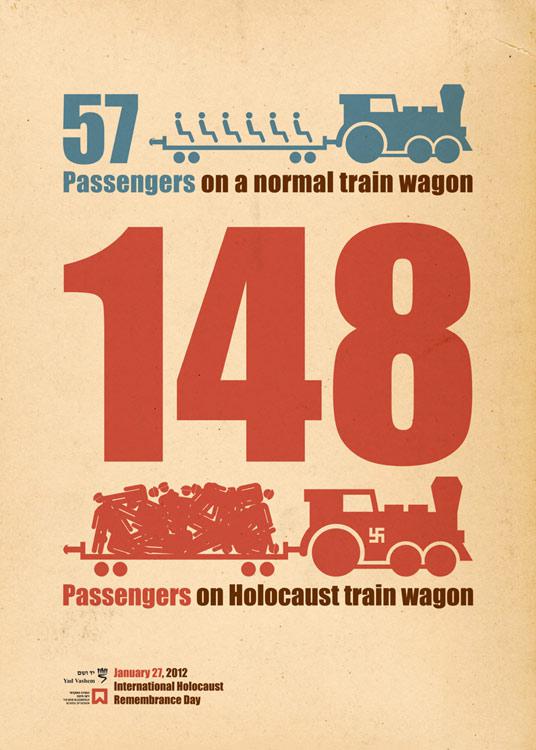
Since I was a child, I remember myself learning and hearing stories about the Holocaust. There were always lots of numbers involved, numbers that were beyond my youthful comprehension. The purpose of this poster is to examine cold data and give it an info-graphic meaning that will arouse emotion and foster understanding

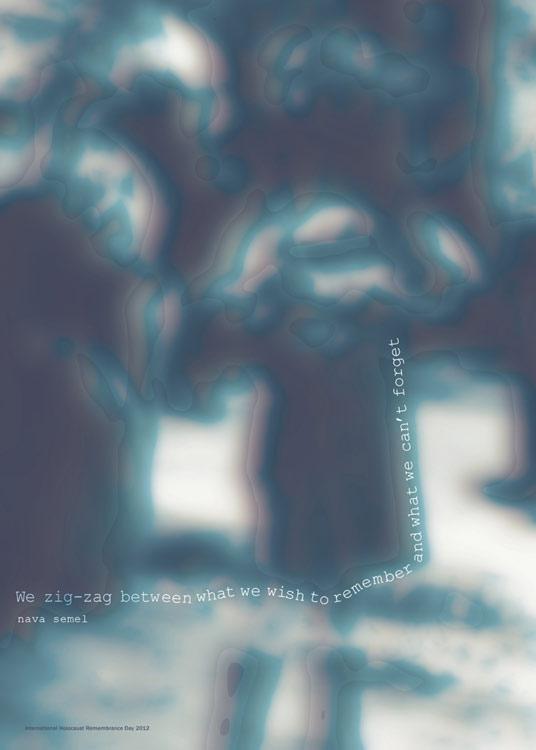
My poster deals with the memory of the Holocaust.
Using one of the most familiar images of children in the Holocaust, I ponder the fact that with each new generation, the collective memory of the Holocaust is damaged, and the next generations will probably remember and understand the Holocaust differently.

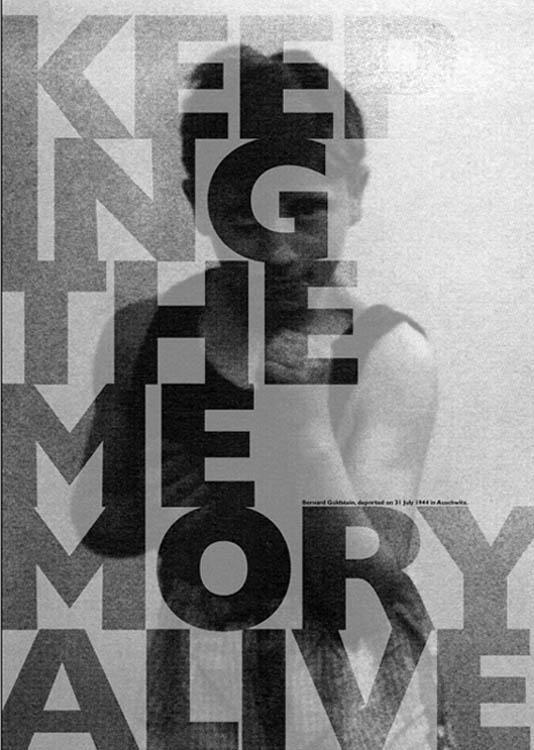
In this poster I used a picture of Bernard Goldstein, which I found in French Children of the Holocaust: A Memorial by Serge Klarsfeld.
Bernard Goldstein was a Jewish child who was deported on the last train that left Drancy to Auschwitz, on 31 July 1944. This child is full of life and the photograph shows a moment of happiness.
This happy instant is in contrast to the horror of the Holocaust.
This child is looking at the audience and is asking them not to forget him.
The choice of one murdered child is an attempt to give him back his individuality and humanity.
The typography is the tool that enables the child to appear: thus, through the use of words and knowledge, the past doesn’t disappear.

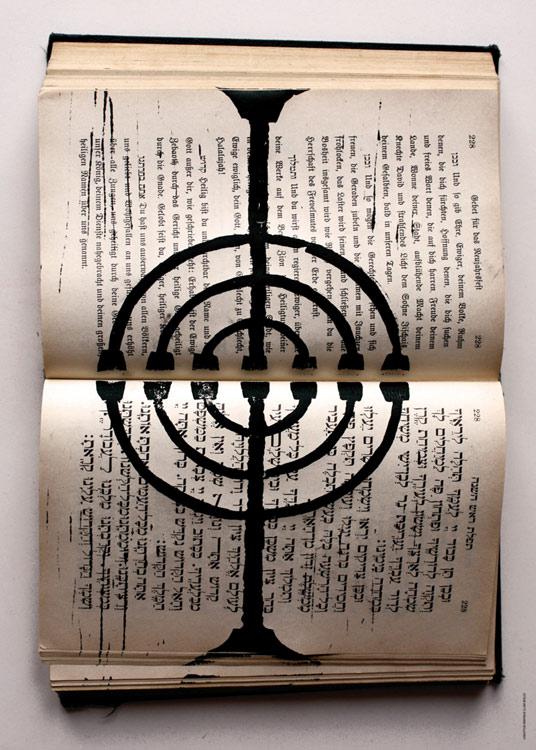
MADE FOR TARGET
The book is a symbol of humanity: it is written, it is handled, and it is read. This poster transcribes the violence with which the Nazis targeted the Jews during the sSecond World War. Indeed, the target (whose aim is to exterminate and make disappear) is drawn on a prayer book: it evokes the wish for independence and freedom of the Jewish people.
The target (shaped by two Menorahs) is made by linocut, like an indelible mark.We can ask the question- is anti-Semitism still present?

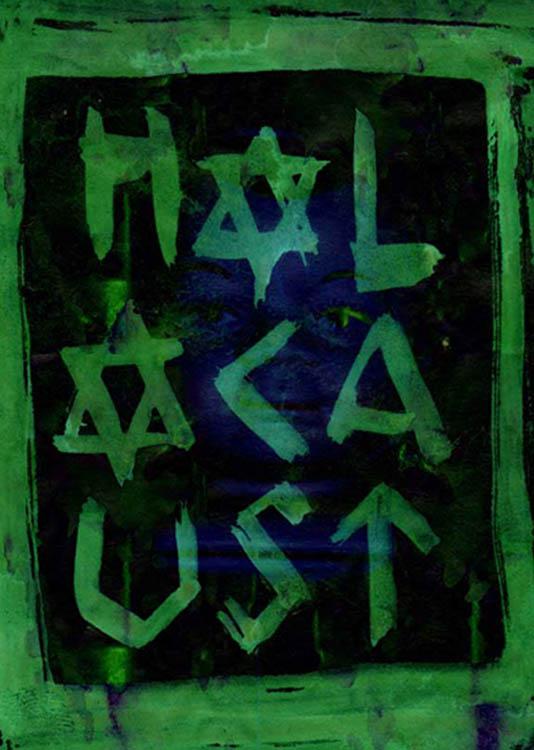
I used a theme of a broken doll, because the toy obviously corresponds with the children topic. I combined childlike drawing with the parts of a doll body set up to the word “Holocaust“. I was inspired by the real drawings which survived the concentration camps.

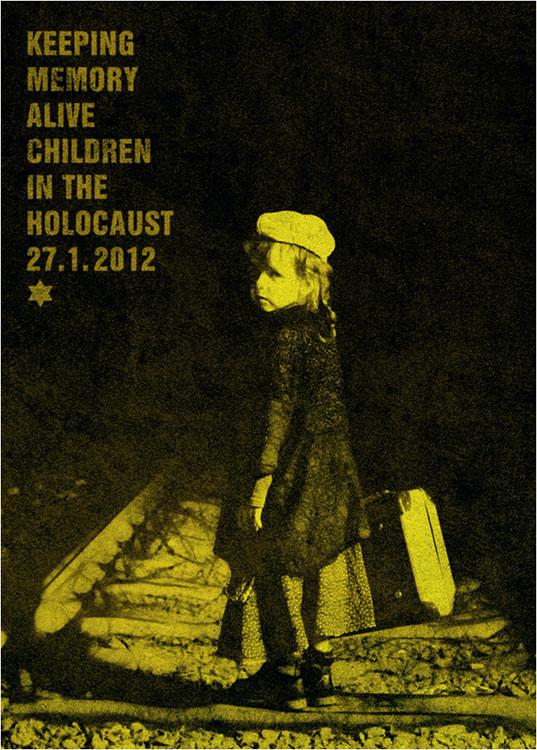
The theme of Children and Holocaust was a very interesting challenge for me. My first endeavour was to contemplate the murder of children in the Holocaust and the implications of this murder. In the poster I created, I felt I should not just present the subject, but also ask questions about its meaning. The endeavour to get answers to these questions should become important for all of us, touch our hearts and make us better people.

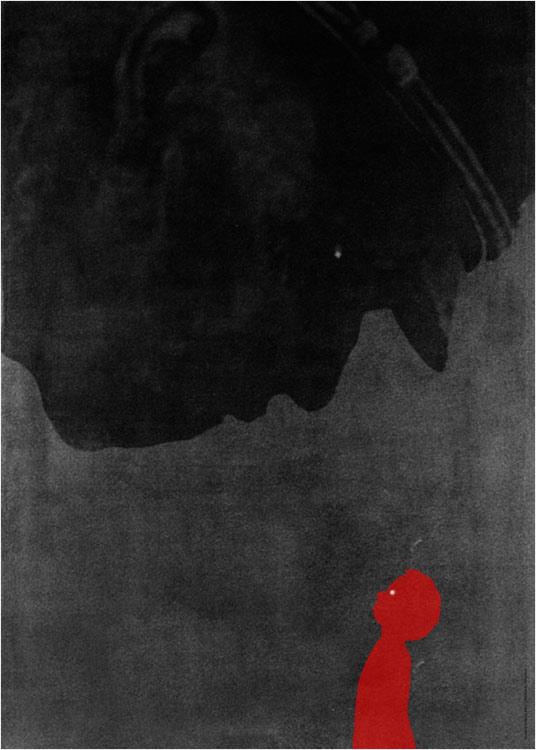
This poster wants to show the impotence of Jewish children against the Nazi soldiers. I tried to illustrate this theme with a big contrast between soldier and child.

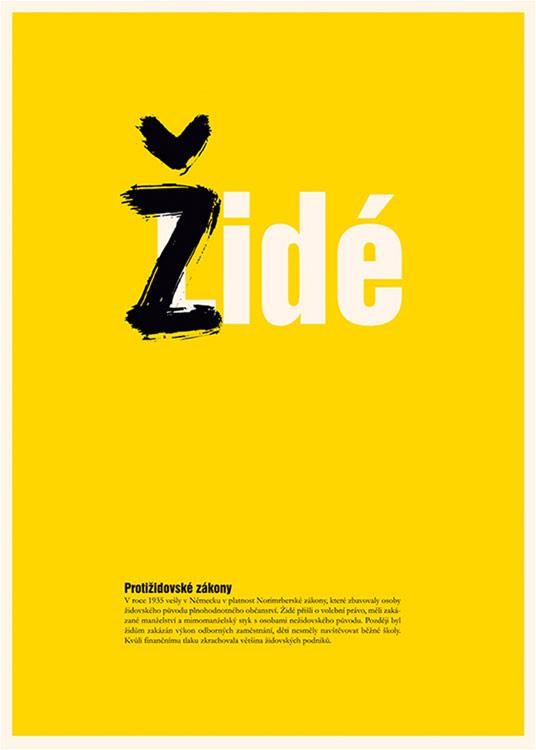
The poster, entitled ”Lidé/Židé“ (meaning People/Jews) is a reference to the designation of Jews as less-than-human, as declared by the Nuremberg Laws. This artwork isn't about atrocities taking place away from the sight of normal civilians, but rather the generally applied discrimination that was met and tolerated in the everyday life of normal people.

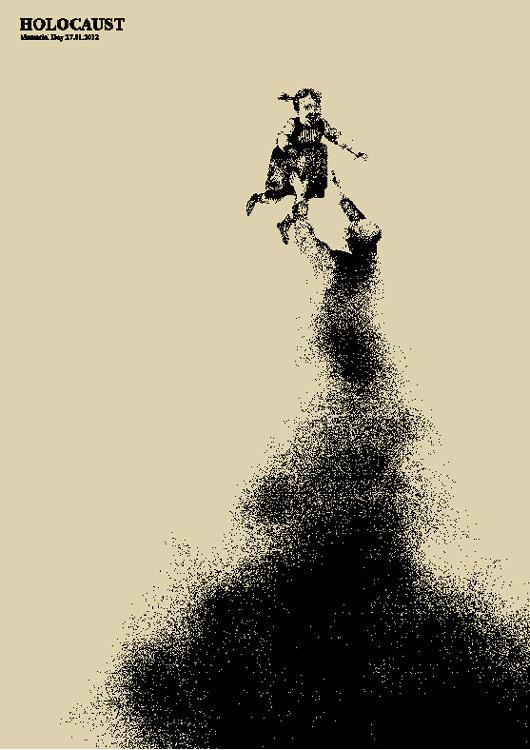
The illustration allegorizes the loss of a parent. This tragic moment is intensified by the intimacy of both characters. The scene shows a loving father and his little daughter. Playfully, he tosses her in the air. Filled with joy, she smiles at him lovingly. Determined to catch his daughter, the father raises his hands in the air, but his legs have turned into ashes. Unable to keep steady on the ground, his daughter is not going to find stability either.

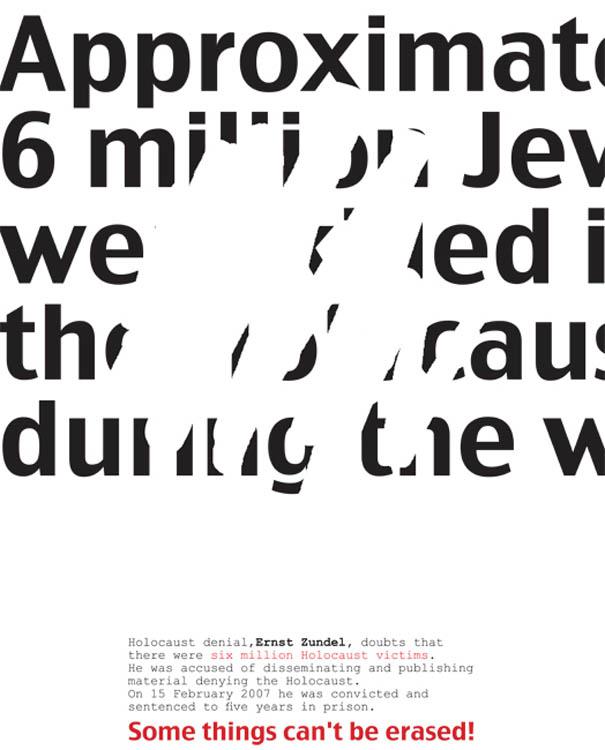
My poster deals with the importance of memory: With the phenomenon of Holocaust denial on the increase, I chose in this work to focus upon major claims made by some of the most notorious Holocaust deniers, who have attempted to wipe out the existence and memory of the Shoah by claiming that it is a complex conspiracy.

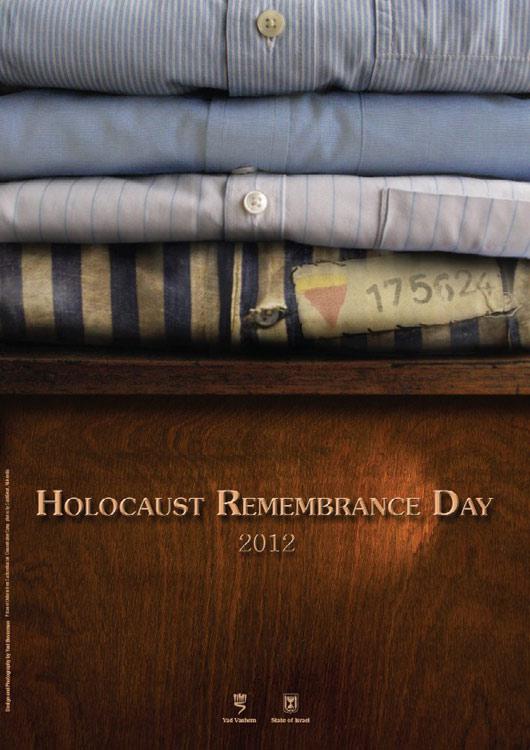
Keeping the memory alive:
In this poster I chose to emphasize the intimate aspect of objects and memories in the Shoah. The object that a survivor carries throughout a lifetime enables him or her to keep their memory alive. The closet symbolizes a collective closet, reflecting the repressed memories of the Jewish people as a whole.
For every survivor, the memory is forever present under the thin veil of everyday functioning, represented by the new shirts, but at the bottom of the stack, there always lies the shirt kept from a different time - the persisting memory of a past that refuses to be abandoned.

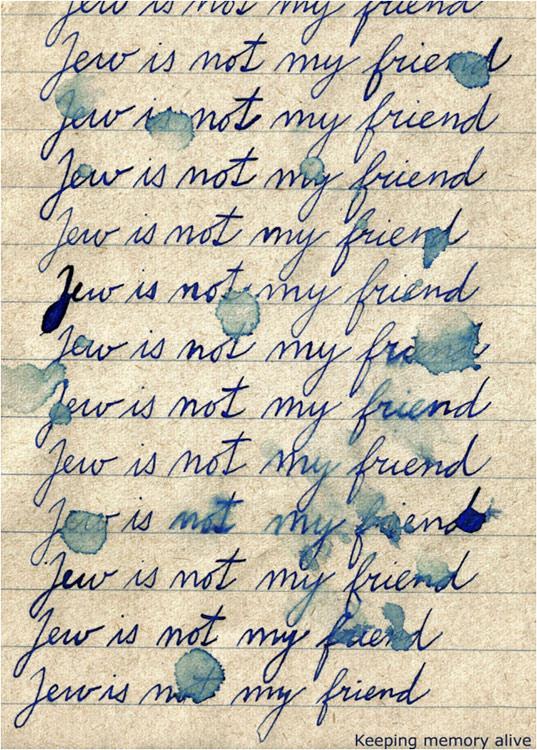
My Poster depicts a school punishment for a non-jewish student aimed at making him forget his friendship with a jewish child. It illustrates the fact that adults made children do unnatural things for their own absurd reasons.

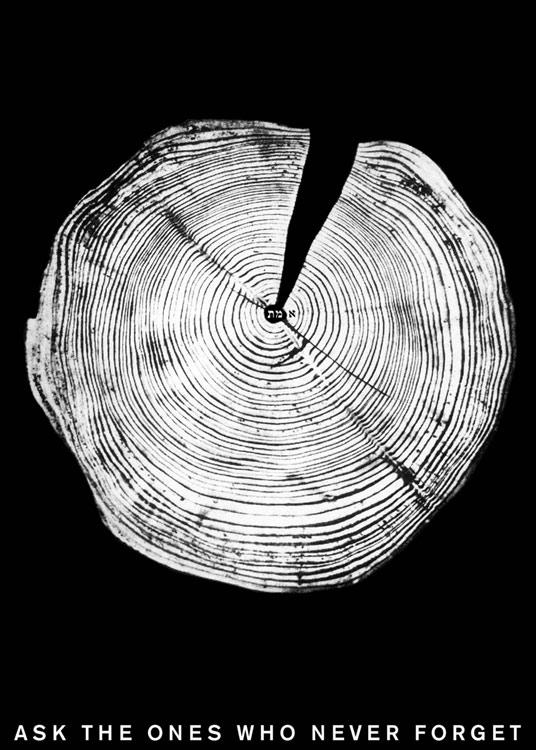
ASK THE ONES WHO NEVER FORGET
Here, there is a misunderstanding between historic time and natural time. The rings of the tree always hold the memory of the past, and I noticed that often, former concentration and extermination camps are located in forests. To quote an old Jewish wise man “we don’t cut the tree to have a fruit”. The poster is paradoxical since there is a reflection on the fruits which will lead to a just memory. On the outside, the tree’s years, emotions, and tragedies disappear. All that is permanent resides in the fact that cutting a tree represses the echoing of the irreparable crimes of the Nazis. The Hebrew writing in the center of the trunk tells the story of Golem in which Rabbi Loew writes "Emeth" (truth), so that it could give him life. In order to take life away from him, he only deleted the aleph, leaving meth which signifies death. Aleph (the letter of continuity) is found within the trunk, where the memory is inscribed. The truth resides in the act of remembering and above all, never forgetting these dramatic events. The big notch in the trunk (which also gives the appearance of a clock) portrays for us the unique character of the Holocaust, a true rupture in history, a radical break, a unique event which took away part of man’s humanity. This notch also directs us to the Hebrew word written at the center which signifies death.

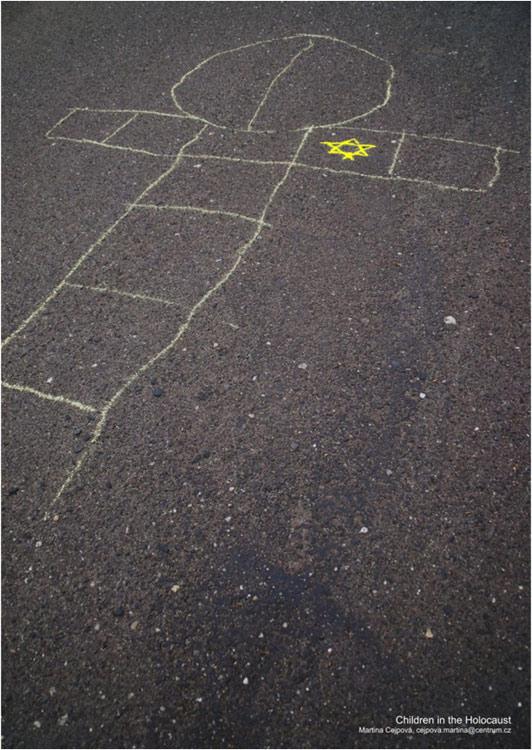
"CHILDREN IN THE HOLOCAUST"
I tried to capture the feelings of children who were present in the Holocaust. They didn´t know what was happening, but it was all around them, even when they played.

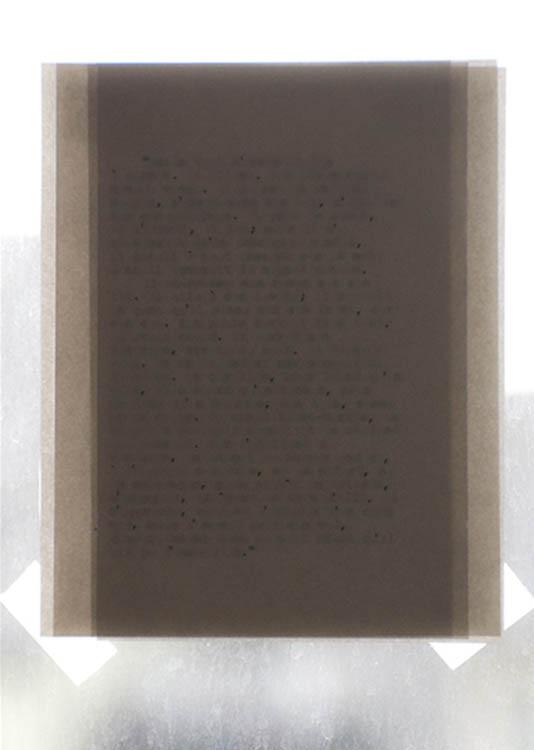
This poster is a decomposition of a text by Georges Perec, an extract from his book “La Disparition”. In this book, he never uses the letter “e”. This is to emphasize the memory of his mother who was lost during the Holocaust. I chose to progressively delete every vowel, every character like “t”, “p”, “q”, “d”, “g”, “h”, “j”, “k”, “l”, and “b” and finally, every letter. There is finally only punctuation left as the text becomes illegible. This accentuates the unspeakable impact on all humanity, even those who didn’t lose anything.

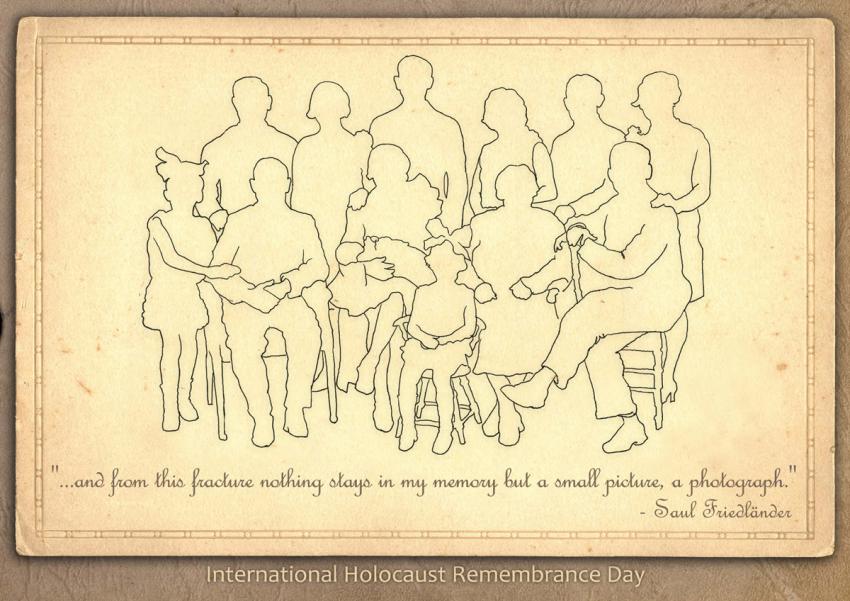
One can outline the sitters in a photograph using a see-through overlay, numbering and naming each person in the picture and thus creating a record of their names and faces. But what would the viewer know or understand if he found only outline of the sitters without the accompanying photograph or names? As we enter the time when Holocaust survivors- those vital links to the past - will no longer be with us, I fear that the memory of those who were murdered will fade away to a mere outline, and than to nothing…







